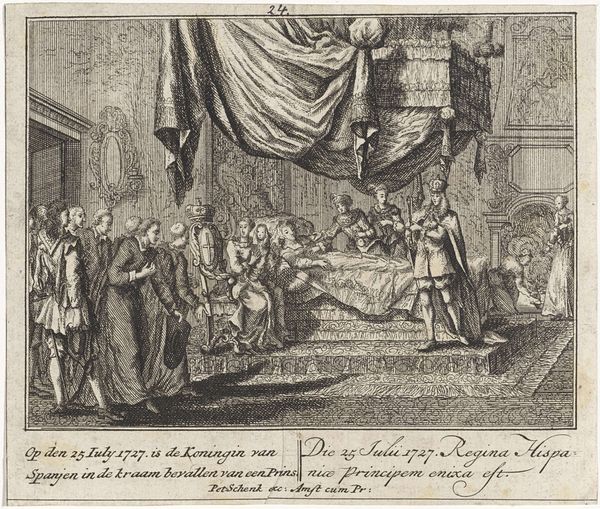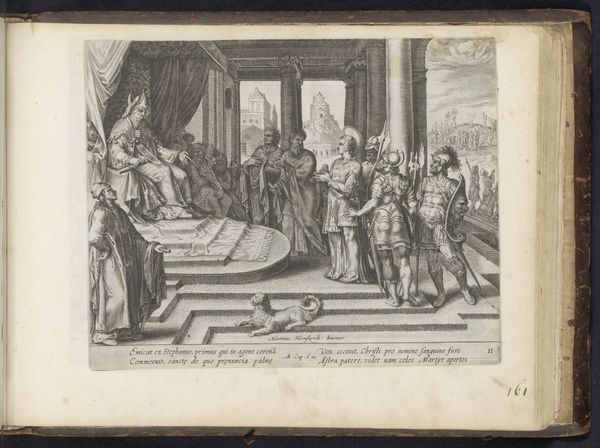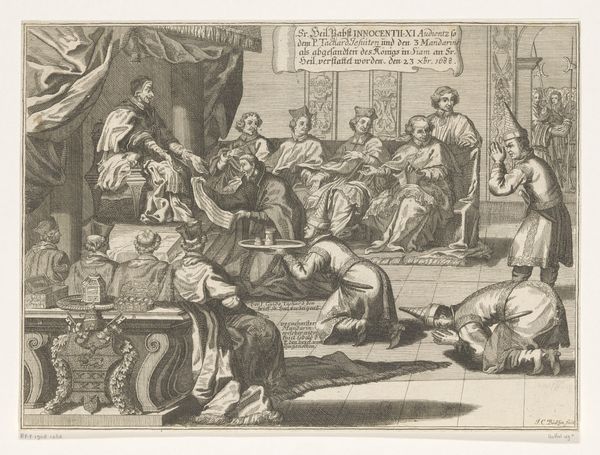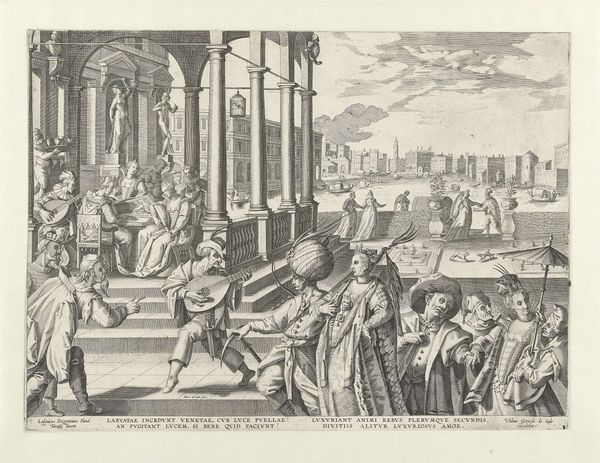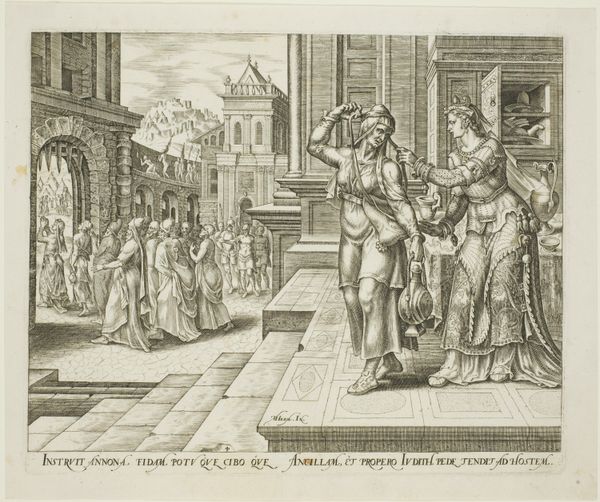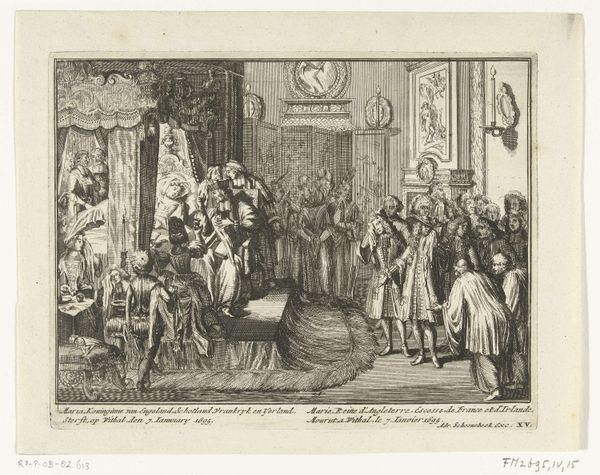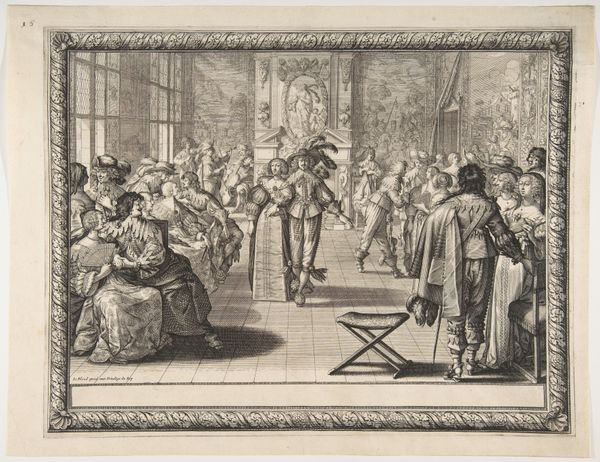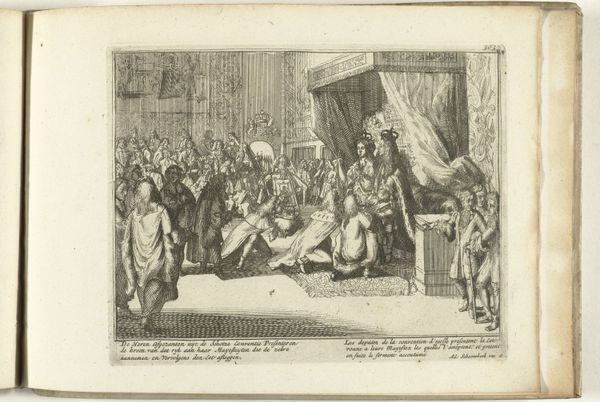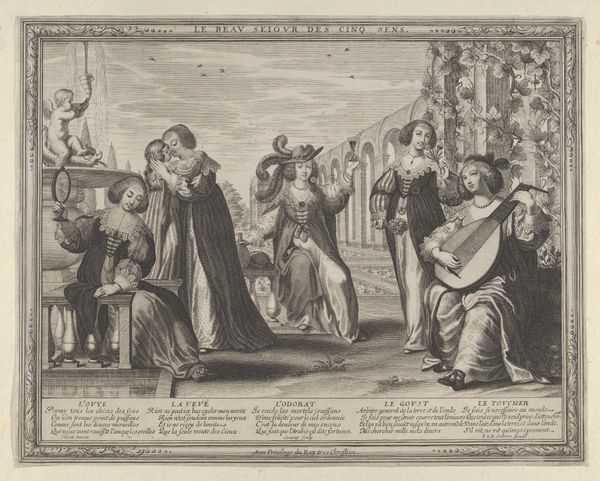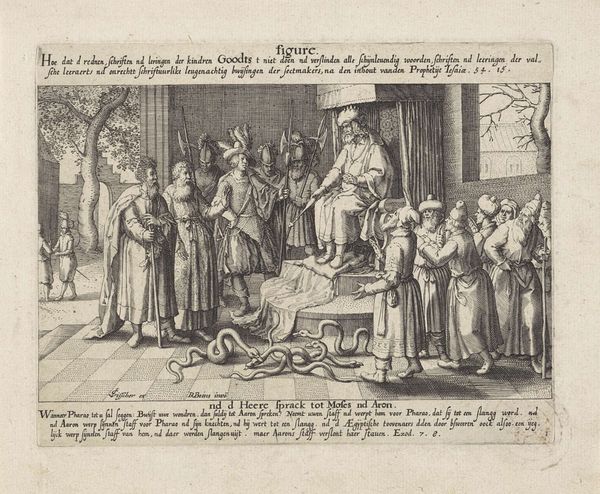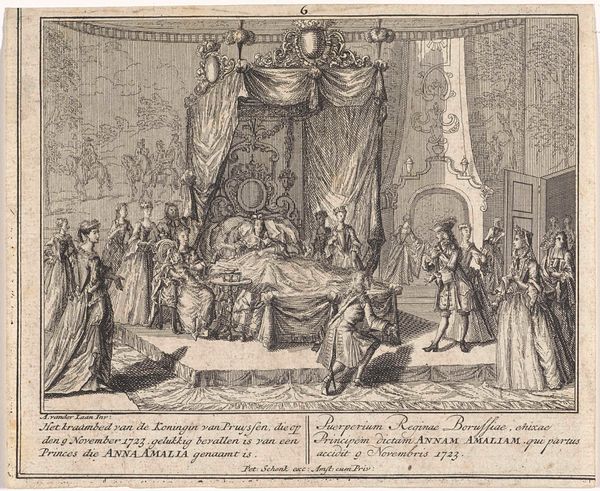
print, engraving
#
narrative-art
#
baroque
# print
#
pen illustration
#
figuration
#
history-painting
#
academic-art
#
engraving
Dimensions: height 240 mm, width 298 mm
Copyright: Rijks Museum: Open Domain
Editor: This print, titled *Het overlijden van de koningin, 1695* – or *The Death of the Queen* – by Romeyn de Hooghe, has a strong narrative feel to it, almost theatrical. It looks like an engraving, but I’m drawn to the expressions of the people gathered around the Queen’s deathbed. What story do you think de Hooghe is trying to tell us here? Curator: It's crucial to consider this image within the broader context of 17th-century power dynamics and gender roles. Death, especially a queen's death, was a highly staged event, rife with political significance. Look at the spatial arrangement; the queen is centered but appears almost hidden. What does this placement say about her agency, even in death? Consider too, the predominantly male figures surrounding her; who benefits from her passing and the succession to follow? Editor: So it’s not just about mourning but about succession, power? The male gaze feels really present in the work, given the Queen's vulnerability in death. Curator: Exactly. This engraving provides an opportunity to reflect on the intersections of gender, power, and representation. The ‘theatricality’ you pointed out initially becomes, through this lens, a meticulously crafted scene, performing particular narratives about monarchy and legitimacy, deeply embedded in a patriarchal framework. Does this reading change how you view the work? Editor: Absolutely. Thinking about who benefits and who gets to control the narrative gives a completely different weight to what I see. I had initially considered this an art historical piece but you are demonstrating to me that this image acts as a potent lens for critiquing those same historical dynamics, making it relevant to contemporary concerns about power and representation. Curator: I am delighted we were able to connect this work to our contemporary lens of the past.
Comments
No comments
Be the first to comment and join the conversation on the ultimate creative platform.
